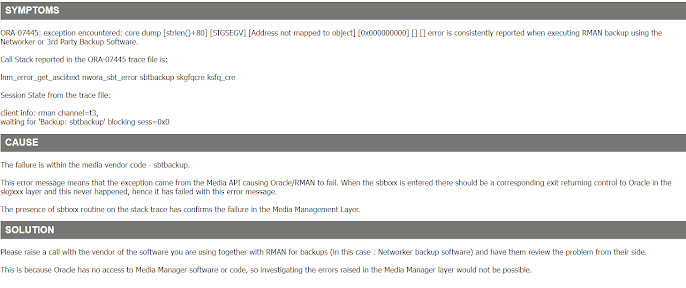Performance of concurrent request
Performance of concurrent request can be tracked in many ways. Please perform the below steps and provide the output to the cases 1. Check the SID of the concurrent request using query: SELECT a.request_id, d.sid, d.serial# ,d.osuser,d.process , c.SPID ,d.inst_id FROM apps.fnd_concurrent_requests a,apps.fnd_concurrent_processes b,v$process c,v$session d WHERE a.controlling_manager = b.concurrent_process_id AND c.pid = .oracle_process_id AND b.session_id=d.audsid AND a.request_id =&req_id AND a.phase_code = 'R'; 2. Get the row fetched using the SID from step 1. column name format a30 word_wrapped column vlu format 999,999,999,999 select b.name, a.value vlu from v$sesstat a, v$statname b where a.statistic# = b.statistic# and sid =&sid and a.value != 0 and b.name like '%row%' 3. Check Database session status and what it is running set echo off set linesize 132 set verify off set feedback off set serveroutput on; declare SID number := 0 ; SERIAL number := 0 ; usern
